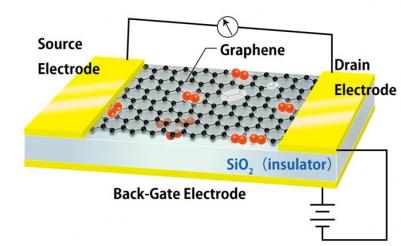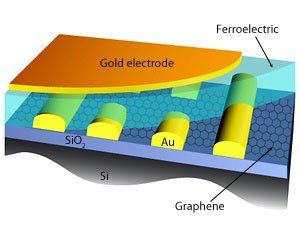Oxygen adsorption in graphene can be controlled using a field-effect transistor
Graphene can adsorb oxygen onto its surface (which changes graphene's electronic transport properties). This can be useful for Spintronics devices, but the adsorption is difficult to control. Researchers from the Tokyo Institute of Technology developed a way to control the adsorption of oxygen by applying an electric field to a Graphene-based field-effect transistor (FET).

The density of carriers (electrons and holes) in the FET can be tuned by applying an electric field to the gate of the device and, when oxygen molecules then adsorb onto the device, the conductivity of the FET changes.

